Creatine & Exercise Performance
This post is all about creatine’s effect on exercise performance. Specifically, we’re gonna cover what creatine is, why it’s so effective as a dietary supplement, and how to take it to get the best results in the gym. And if you’d like to do more reading on your own, I’ve got two great review papers linked below.
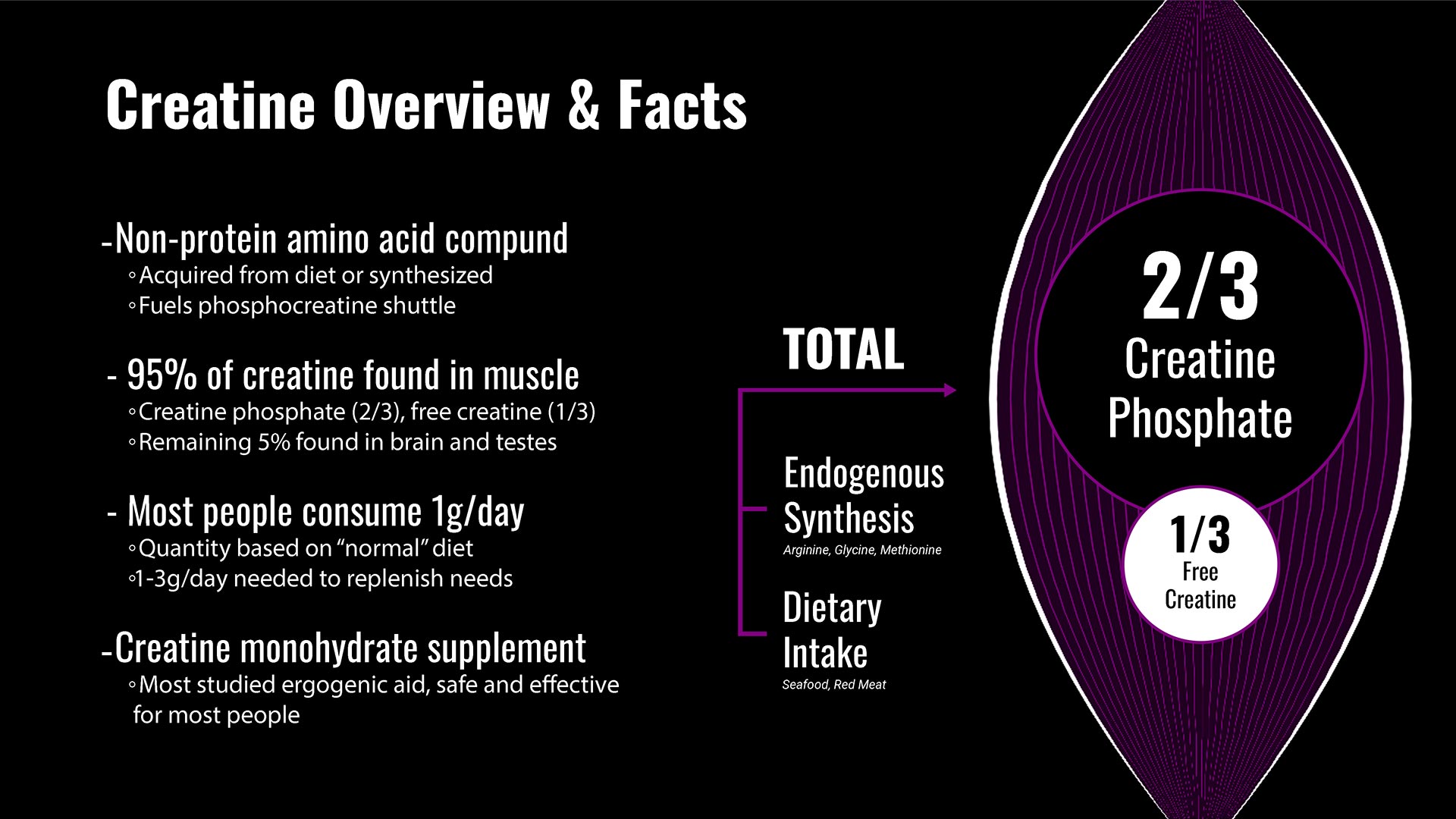
To start things off, what is creatine?
Creatine is a non-protein amino acid compound that our body uses to fuel high intensity activity through the phosphocreatine shuttle. If you don’t know what that is don’t worry, we’ll talk more about energy systems in a minute. Creatine may not be a protein, but it really likes hanging out with protein. Roughly 95% of our body’s creatine is stored in skeletal muscle, with the last 5% or so being found in other places like the brain. Similar to many other necessary energy substrates, we get some of our daily creatine needs through the foods we eat and the rest is made within our body. Most people consume about 1g of creatine daily with a diet that includes animal products like red meat and seafood. But we need about 3g each day to function properly, so our kidneys and liver work together to endogenously synthesize the rest. However, regardless of how it’s acquired, nearly all creatine in the body makes its way to the muscles and is stored as either creatine phosphate or free creatine.
Creatine monohydrate is the most popular dietary supplement form of creatine, but our bodies ultimately treat it the same as the creatine compounds we’d get from eating a big steak. Creatine monohydrate is shelf stable, relatively inexpensive, and proven to be safe and effective for most healthy people. So to make sure we’re all on the same page, all further mentions of creatine the supplement will be referring to creatine monohydrate.
Ok, great. We now have a basic understanding of creatine. How does this supplement make us better in the gym? To answer that, we need to know just a little bit about energy systems.
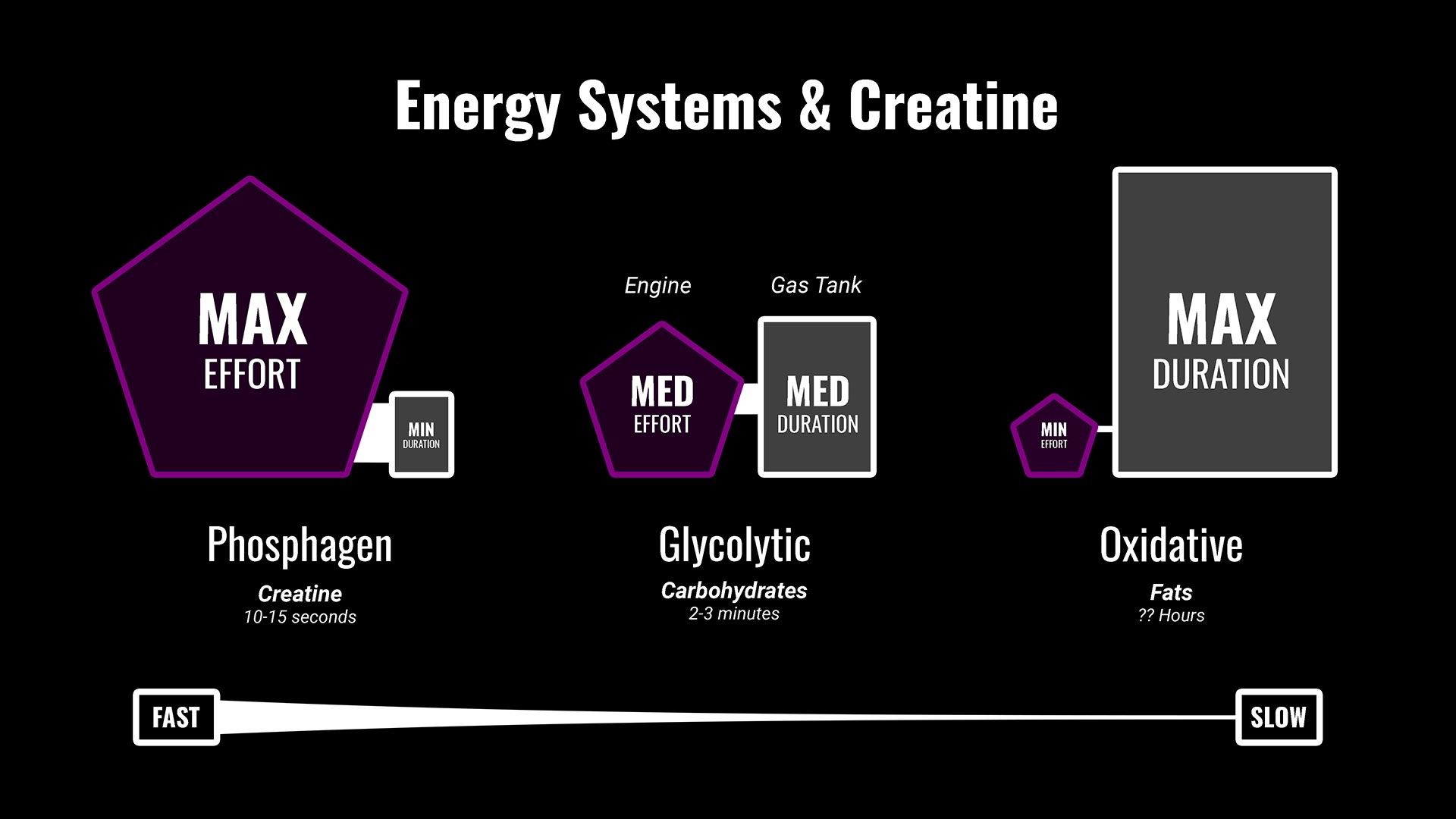
Whether we’re napping on the couch or running a max effort 100m sprint, we require energy to function. Luckily, our body is really good at making one specific type of fuel that can be spent to produce energy. And that fuel is ATP, or adenosine triphosphate. ATP is made through a variety of different metabolic processes that occur within three different energy systems. We have the phosphagen system that uses creatine, the glycolytic system that burns carbohydrates, and the oxidative system that primarily breaks down fat. All three of these energy systems work together, but the specific energy demands of any particular activity control which one is most active and for how long.
To help make all of this a bit more understandable, I want you to think of these energy systems as engines with gas tanks. The phosphagen system fuels high-intensity, max effort activity, like sprinting, but its tiny gas tank can only last for 10-15 seconds. The glycolytic system fuels more moderate to high intensity exercise and can do so for 2-3 minutes. And although the oxidative system has a really small engine, it can run for hours and hours due to how much body fat most of us have stored. Even just a few pounds of fat contain thousands of calories.
Let’s zoom in on the phosphagen gas tank and talk about what creatine actually does for us in the gym.
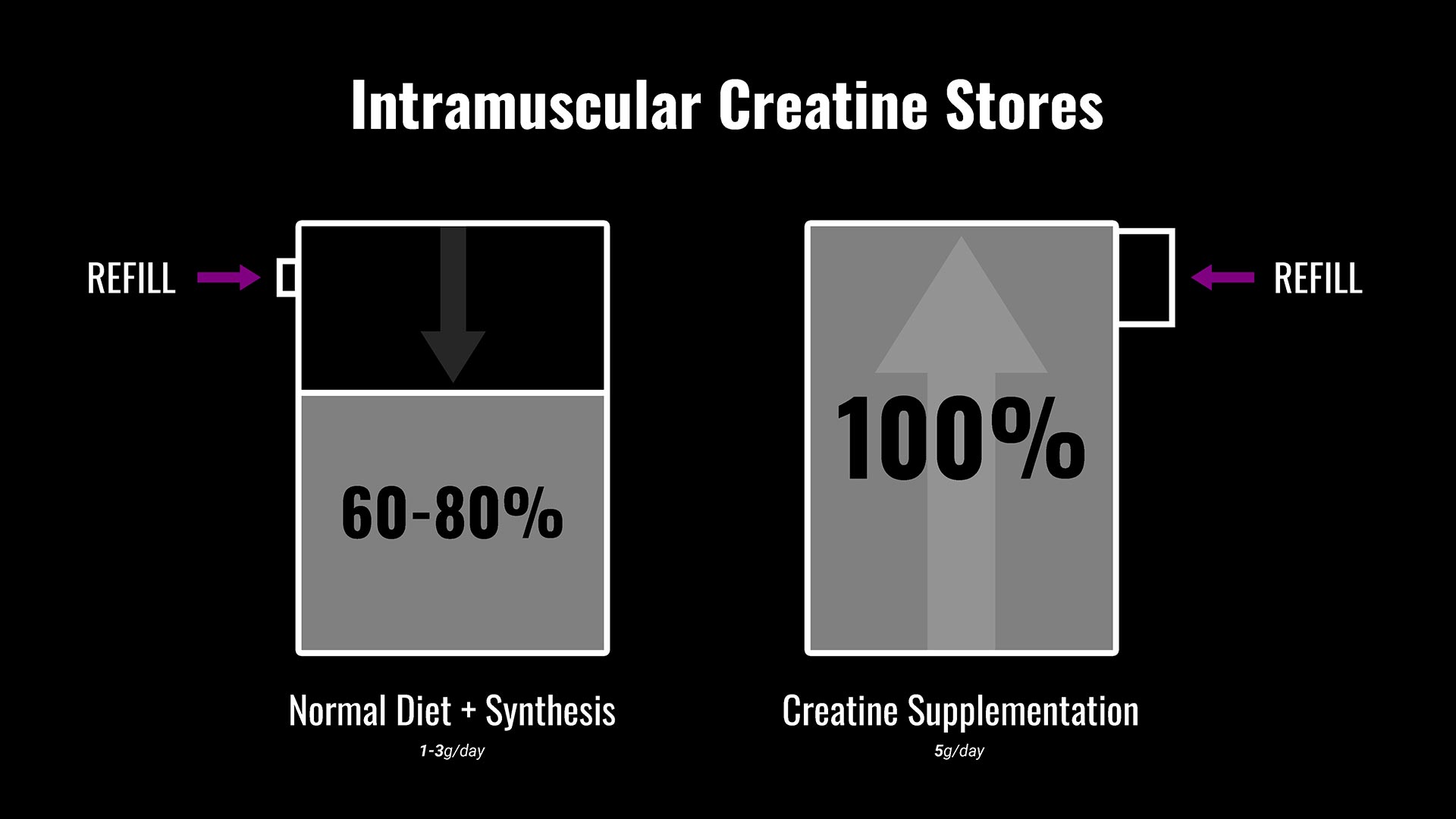
As mentioned before, a normal, healthy diet combined with what our body makes internally can supply us with about 1-3g of creatine each day. This is enough to sustain essential bodily functions and fuel high intensity exercise, but as you can see here, a typical diet doesn’t completely saturate intramuscular creatine stores – a big chunk of this tank is still empty. Why is this so bad for strength and size gains? Simply put, if our phosphagen system isn’t fully fueled, our max effort engine will be forced to shut down sooner.
In a real world setting, the tank on the left might help us knock out 8 challenging reps on bench press. But the tank on the right may produce 9 or 10 reps with the same weight. Creatine supplementation also allows for faster refueling of this tank between sets and this can lead to more consistency during workouts. If you normally start off strong in sets 1 and 2 but eventually lose reps to fatigue in sets 3 or 4, creatine can help fix that issue. An extra rep here and there might not seem like that big of a deal, but a 5-10% improvement in each session is huge when compounded over time.
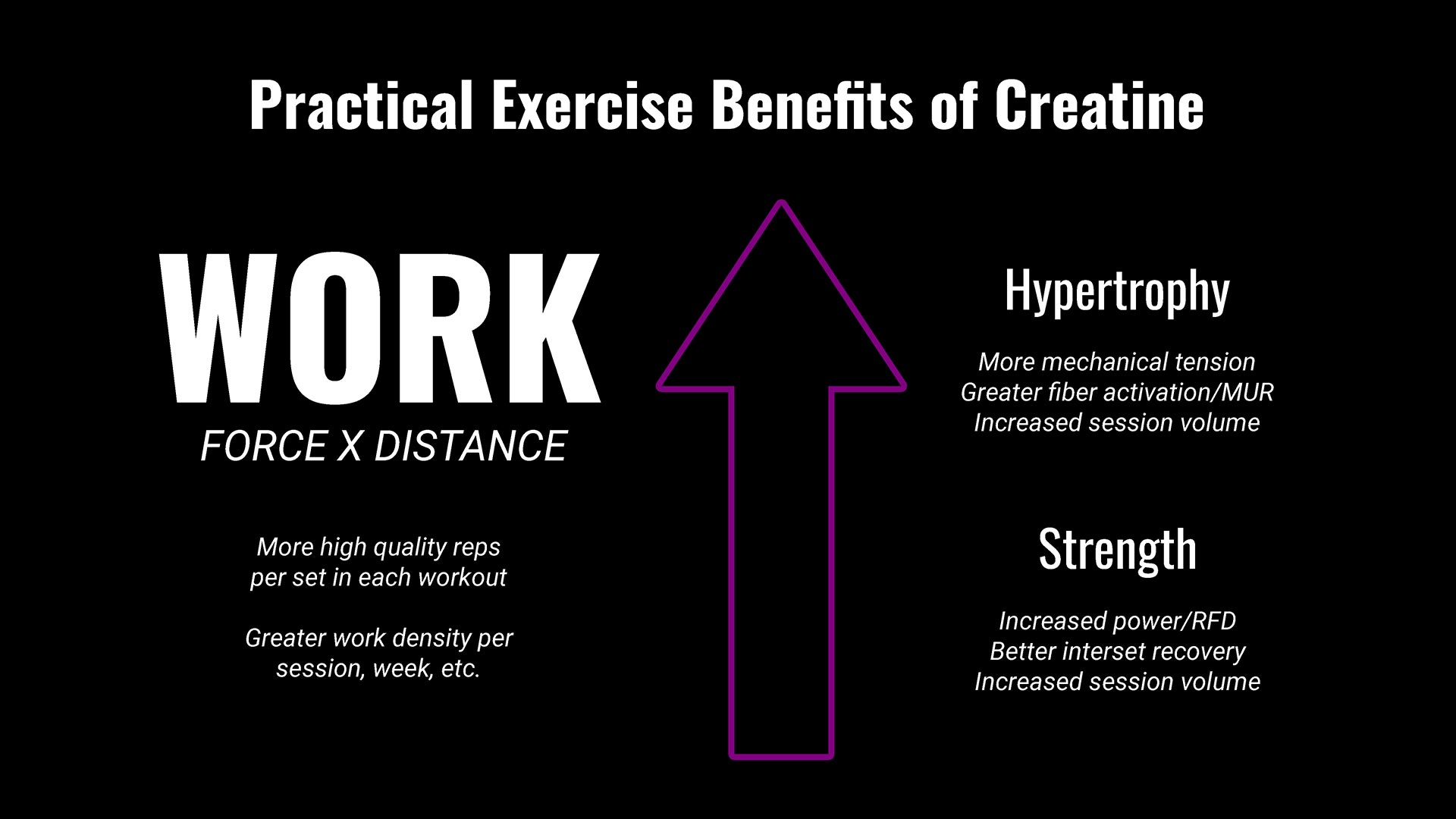
Creatine doesn’t directly stimulate muscle growth and it likely isn’t contributing much if anything to recovery outside of the gym, creatine’s most significant contribution to exercise performance is the ability to do more work. And if we can do more work in the gym and experience higher quality workouts, we can gain more strength and size over time. Sessions focused on hypertrophy will likely benefit from more mechanical tension and greater fiber activation, while strength workouts may see improvements due to faster rates of force development and quicker inter-set recovery times. Creatine isn’t some crazy anabolic super drug that transforms us into the Hulk overnight, it simply makes our workouts better by giving us more energy to perform them well.
Now that we know how creatine works and have realistic expectations about the supplement, let’s cover how to take it.
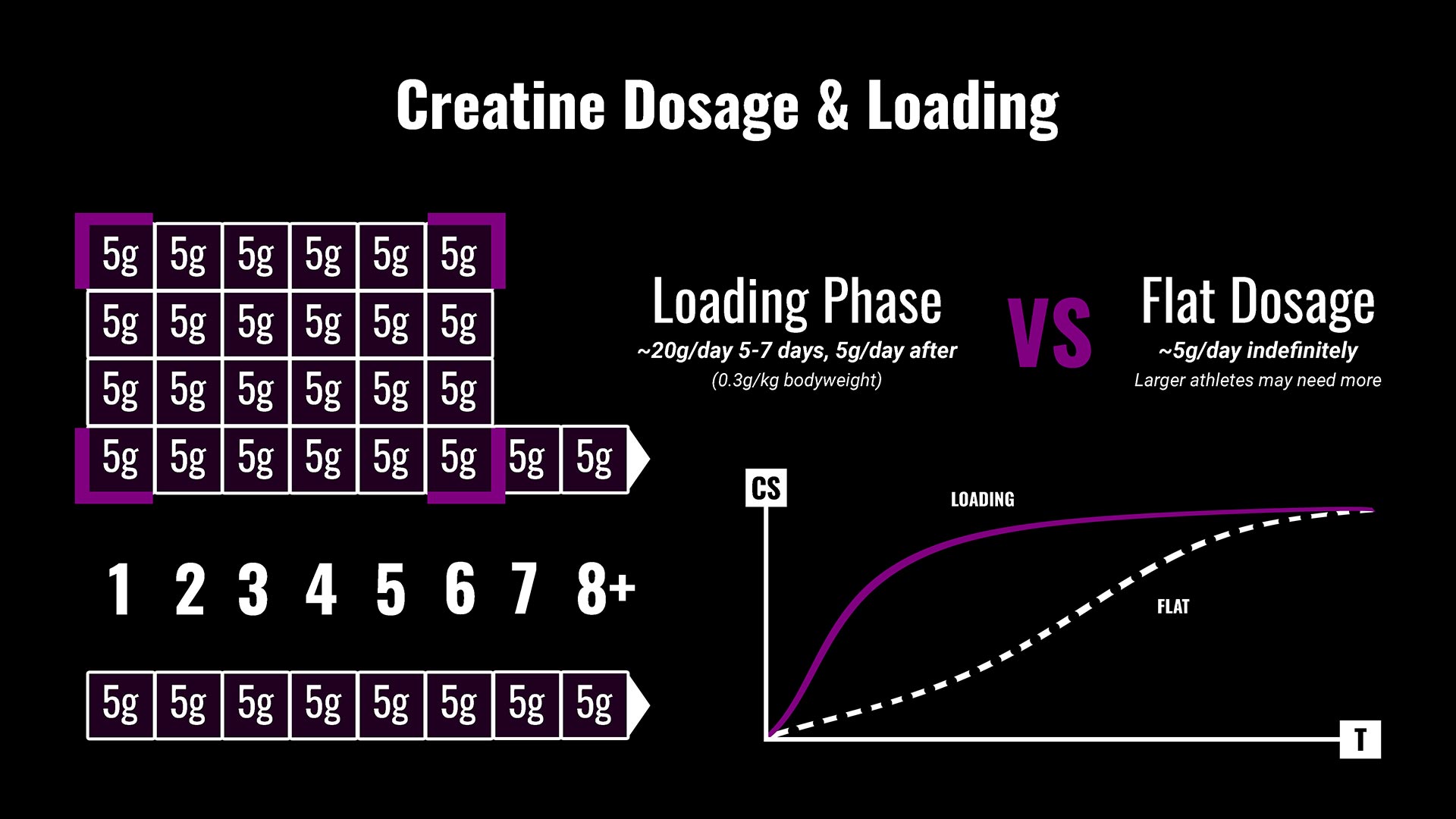
Creatine supplementation is really straightforward. You can either implement a loading phase to see performance benefits faster, or stick to a flat dosage to keep things simple. To do the loading phase, take 4 individual servings of 5g of creatine for the first week, then drop down to one serving of 5g per day. The total recommended daily quantity during the loading phase is 0.3g of creatine per kilogram of bodyweight, but 20g per day is fine for most people. Luckily, most creatine supplements come with a 5g scoop included, so it’s easy to stick with 5g increments. If all of that sounds like too much work, simply take 5g per day. This graph helps show the difference in time between the two protocols. You can see that the loading phase spikes intramuscular creatine stores in about a week, while the flat dosage takes roughly a month, but they both reach the same point. So if you want to experience the benefits of creatine faster, go with the loading protocol, but if you want to keep things simple, do the flat dosage. Don’t overcomplicate this part, just do what you think is best for you.
Alright. Let’s recap everything and wrap it up.
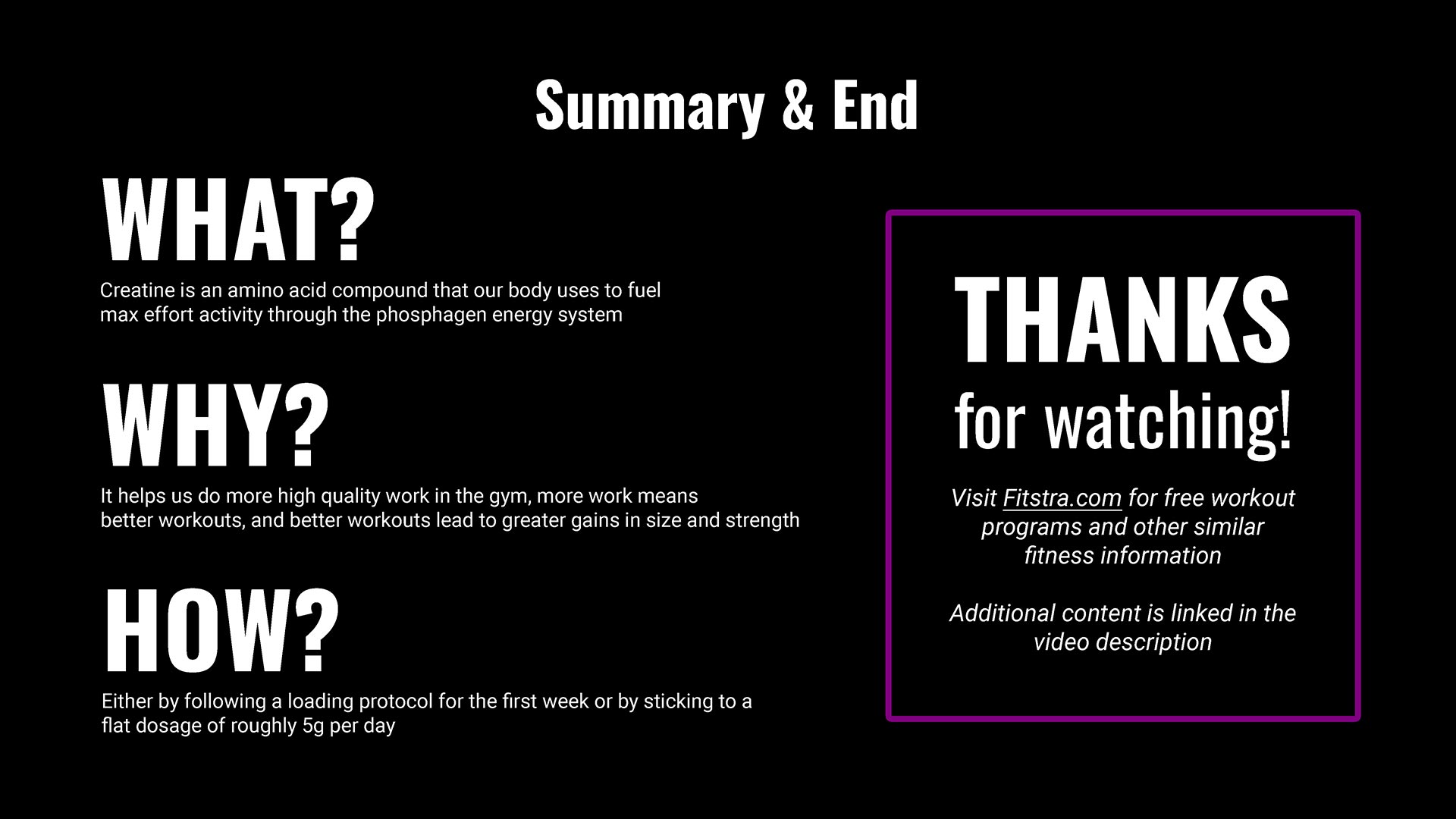
What is creatine? It’s an amino acid compound that our body uses to fuel max effort activity through the phosphagen energy system. Why is creatine so effective as a dietary supplement? It helps us do more high quality work in the gym, more work means better workouts, and better workouts lead to greater gains in size and strength. And finally, how do we take it? Either by following a loading protocol for the first week or by sticking to a flat dosage of roughly 5g per day. There’s a ton of other neat research on creatine and cognitive performance, like improved memory and decreased mental fatigue, but that’s a topic for another video.
Thanks so much for watching, everyone. This was a fun one to make. If you have topic suggestions for other videos like this, let me know. Check out Fitstra.com for free workout programs and other similar fitness information. See ya next time.
References
Hall, M., Manetta, E., & Tupper, K. (2021). Creatine supplementation: An update. Current Sports Medicine Reports, 20(7), 338–344. https://doi.org/10.1249/jsr.0000000000000863
Kreider, R. B., Kalman, D. S., Antonio, J., Ziegenfuss, T. N., Wildman, R., Collins, R., … Lopez, H. L. (2017). International Society of Sports Nutrition position stand: safety and efficacy of creatine supplementation in exercise, sport, and medicine. Journal of the International Society of Sports Nutrition, 14(1). https://doi.org/10.1186/s12970-017-0173-z